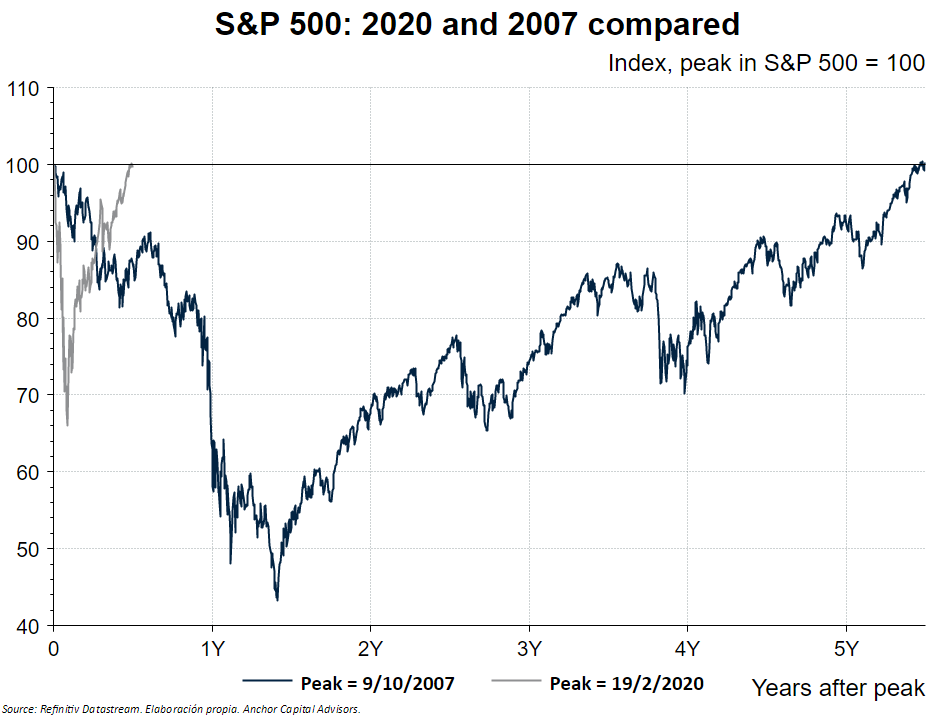Bear Market or "Flash Crash"?
We can look for many comparisons between the crisis of 2007 and the crisis of 2020. One of them, the duration and intensity of the fall and the time of subsequent recovery, is striking.

In terms of intensity, in 2020 the lowest point was close to -35% from highs while in 2008 it fell by more than 55%
In time, the 2020 crisis has been a "flash" crisis of just two months, when in 2008 the stock market was falling for 16 consecutive months.
The recovery of the whole fall of the year in the S&P500 index runs in parallel to the improvement of corporate earnings with respect to the poor expectations. In the second quarter, with 95% of companies with published results, 82% beat forecasts.
In addition, in 2008 the stock market kept for more than five years below its previous level, until it fully recovered in 2013. By contrast, in 2020 the market has barely taken half a year to return to its initial level.
This has also happened in some European countries, such as Germany, and also in China. In others, such as Spain, the indices are still far from recovering the levels before the fall or the beginning of the year.
In the post titled Two different causes for two different crises, we did already mentioned the differential features of these two types of crisis.
Everything seems to signal that the worst has already happened. Although many argue that this is a "bear rally" and that the market has yet to fall, the abundant liquidity created, the amount of money that went out and has not yet returned to the stock market and the advances in vaccines and treatments of Covid-19 are elements for moderate optimism.
